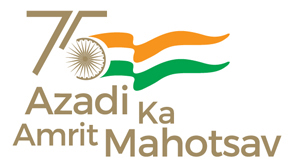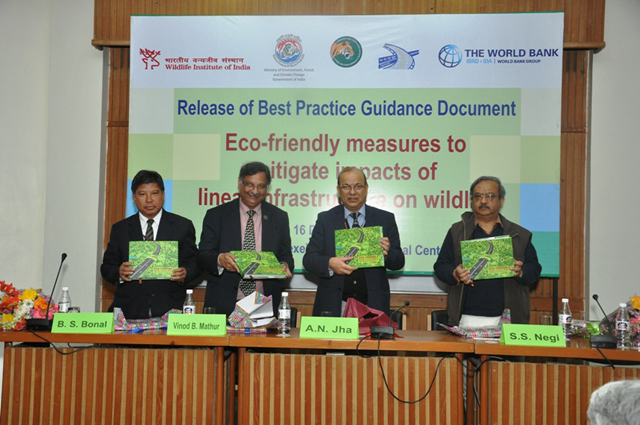December 2016
Visit of Hon'ble Minister of MoEFCC to WII on 18th December 2016
Last Updated: December 30, 2016
Release of Best Practice Guidance “Eco-Friendly Measures to Mitigate Impacts of Linear Infrastructure on Wildlife” in Annexe, India International Centre, New Delhi on 16th December 2016
In response to the directive of the Ministry of Environment, Forest and Climate Change, Government of India, and to respond to the growing challenges of maintaining healthy, living landscapes by reducing the conflicts associated with the expanding linear developments such as road, railway lines and powerlines, Wildlife Institute of India developed the set of best practice guidance - Eco-Friendly Measures to Mitigate Impacts of Linear Infrastructure on Wildlife.
This guidance document was released by Shri A. N. Jha, Secretary, Ministry of Environment, Forest and Climate Change(MoEF&CC) in the presence of Dr. S. S Negi, Director General of Forests and Special Secretary to the Government of India; Shri. B. S. Bonal, Additional Director General of Forest (Wildlife), MoEFCC and Dr. V. B. Mathur, Director, Wildlife Institute of India on 16th December 2016 at the India International Centre in New Delhi. The publication of this document was possible with the support of several partners especially the National Highway Authority of India, Ministry of Road Transport and Highway, Govt. of India and the World Bank.
It is hoped that this document, the first for the country and for South Asia region, would serve as a valuable resource for planners, road and railway agencies and the powerline companies to enable them adopt smart solutions recommended in the guide to promote green infrastructure that would adequately address the need for 'development with caution’ in wildlife habitats within the integrated landscapes. Speaking on the occasion, Shri A. N. Jha Secretary, MoEF&CC complimented the Wildlife Institute of India for preparing such a document that would help to implement the practice of "Development without Destruction '. The challenge now is to ensure that mitigation measures that are proposed in the guidance document are actually implemented in the field, he added.
Last Updated: December 21, 2016
One-week refresher training course for Indian Forest Service Officers on “Management of Coastal and Marine Biodiversity in India: Challenges and Prospects”, from 5-9 December 2016 at Port Blair, A& N Islands
| One-week refresher training course for Indian Forest Service Officers on “Management of Coastal and Marine Biodiversity in India: Challenges and Prospects” was organized jointly by MoEFCC, WII, GIZ and A&N Islands Forest Department from 5-9 December, 2016 at Port Blair, Andaman and Nicobar Islands. This course was designed to achieve the objective of promoting integrated management of coastal and marine biodiversity in India. A total of 19 participants from the different State Forest Department have participated in this training. Officers from various States including Andaman and Nicobar Islands, Gujarat, Kerala, Karnataka, Madhya Pradesh, Uttar Pradesh, Himachal Pradesh, Jammu and Kashmir, Arunachal Pradesh were participated. Resource persons from reputed organizations including Dr. V.B. Mathur, Director, WII, Dr. V.K. Melkani, PCCF(WL), TN, Dr. Alok Saxena, PCCF, ANI and Dr. Michael Vakily, GIZ, Mr M.S. Negi, PCCF(WL), ANI and Dr. K. Ravichandran, CCF(LW), ANI have provided inputs on diverse aspects of management, conservation and challenges in the coastal areas of India. This course was intended to enable the participants to have a sound understanding of the concepts and issues related to managing coastal and marine biodiversity, coastal and marine protected areas, ecological and socio-political context, conservation approaches and legal-policy frameworks between terrestrial and coastal marine PAs. The course curriculum and training methodologies that have been developed exclusively for this course were also shared with participants in both hard and soft copies. For further details, contact the Course Director Dr. K. Sivakumar at ksivakumar [at] wii [dot] gov [dot] in. |
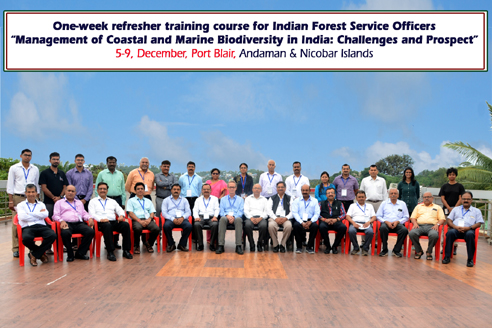 |
 |
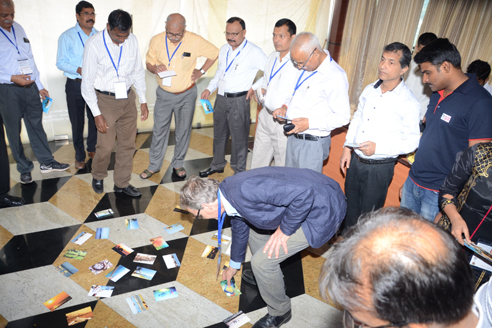 |
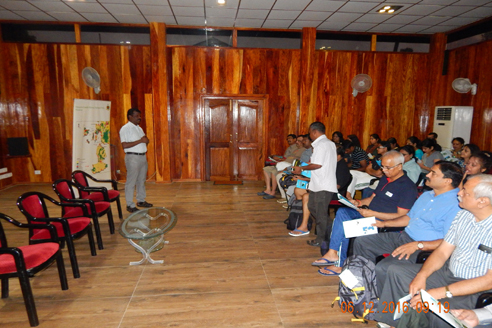 |
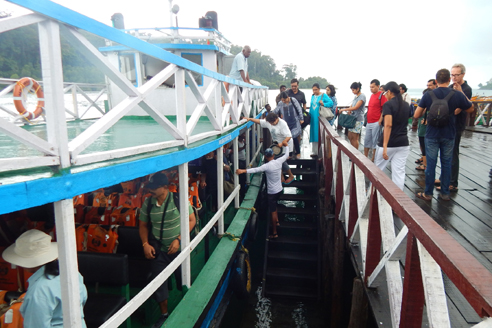 |
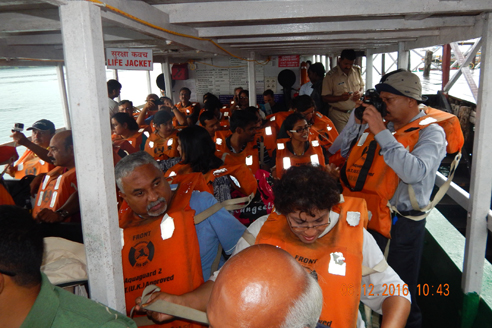 |
Last Updated: January 8, 2018
Inauguration of Landscape Ecology and Visualization Laboratory at WII
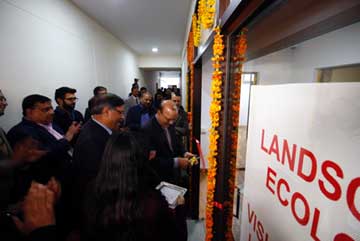 Inauguration of Landscape Ecology and Visualization Laboratory at WII The National Mission for Sustaining the Himalayan Ecosystem (NMSHE), a program under the National Action Plan for Climate Change by the Prime Minister’s Office, is being coordinated by the Department of Science and Technology (DST), Government of India. Six Task Forces have been identified and are being implemented by six national research institutes including Wildlife Institute of India (WII), which is the Task Force on “Micro flora and fauna, Wildlife and Animal Population”. Under the Task Force, WII is implementing the project “Assessment and Monitoring of Climate Change Effects on Wildlife Species and Ecosystems for Developing Adaptation and Mitigation Strategies in the Indian Himalayan Region”. One of the objectives of this project is to set up Landscape Ecology and Visualization Laboratory that allows (1) creation of inter-operable spatial database, (2) linking field data and GIS data, (3) detailed spatial analyses to understand various drivers of biodiversity responses, (4) modeling and scenario building, (5) 2D and 3D visualizations, (6) map production and (7) capacity building including stakeholder negotiations for developing adaptations and policy planning. Conceived and designed by WII, funded by DST under the NMSHE program, the facility was executed by CPWD, Dehradun, with regular technical inputs by project team and resident engineer. It is a pioneering state-of-art-facility integrating field-based biological research, data center, visualization and communication facility, teaching devices and map productions at one place.
Inauguration of Landscape Ecology and Visualization Laboratory at WII The National Mission for Sustaining the Himalayan Ecosystem (NMSHE), a program under the National Action Plan for Climate Change by the Prime Minister’s Office, is being coordinated by the Department of Science and Technology (DST), Government of India. Six Task Forces have been identified and are being implemented by six national research institutes including Wildlife Institute of India (WII), which is the Task Force on “Micro flora and fauna, Wildlife and Animal Population”. Under the Task Force, WII is implementing the project “Assessment and Monitoring of Climate Change Effects on Wildlife Species and Ecosystems for Developing Adaptation and Mitigation Strategies in the Indian Himalayan Region”. One of the objectives of this project is to set up Landscape Ecology and Visualization Laboratory that allows (1) creation of inter-operable spatial database, (2) linking field data and GIS data, (3) detailed spatial analyses to understand various drivers of biodiversity responses, (4) modeling and scenario building, (5) 2D and 3D visualizations, (6) map production and (7) capacity building including stakeholder negotiations for developing adaptations and policy planning. Conceived and designed by WII, funded by DST under the NMSHE program, the facility was executed by CPWD, Dehradun, with regular technical inputs by project team and resident engineer. It is a pioneering state-of-art-facility integrating field-based biological research, data center, visualization and communication facility, teaching devices and map productions at one place.
The Landscape Ecology and Visualization Laboratory (LEVL) was formally inaugurated on 17 December 2016 by Shri Ajay Narayan Jha, Secretary to the Government of India (Ministry of Environment, Forest and Climate Change) at Wildlife Institute of India, Dehradun. Dr. V.B. Mathur, Director and Dr. G.S. Rawat, Dean of WII briefed the Secretary on the overall aim of such facility, while Dr. K. Ramesh, Scientist, along with the LEVL Team (Mr. Arun Kumar, Project Associate; Ms. Sujata Upgupta, Project Scientist and Ms. Tanvi, Project Fellow) made a detailed presentation on the evolution, objectives and operational components of the facility. The working of Laboratory will be interactive with project personnel and the stakeholders, and the outcome would be shared periodically, so that local solutions and adaptation strategies may be developed simultaneously. There is also a plan to design and execute concept-based and skill-based courses on landscape approach to natural resource management. It was placed on record the funding support by DST; execution by the CPWD and initial inputs by the University of British Columbia, Canada. The inauguration was attended by faculty members and Sectional Heads, research fellows of NMSHE project, staff of GIS and IT Cell of WII and staff of CPWD.
Speaking on the occasion Shri A.N.Jha, Secretary, MoEFFCC, who is also the Chairman of WII Governing Body appreciated the initiative taken by the Institute in establishing a state-of-the-art facility, which would greatly facilitate both environmental decision-making at the country-level and in articulating India's position during international negotiations. This 'inspiring facility' would also serve as a role model for other scientific institutions as well as for MoEFCC, he added.
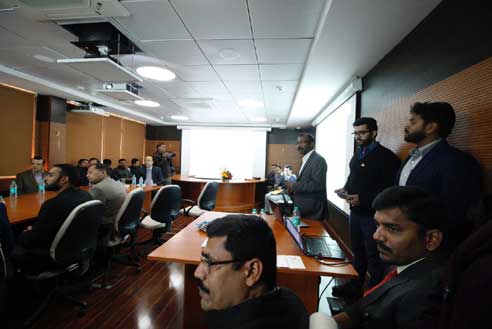 |
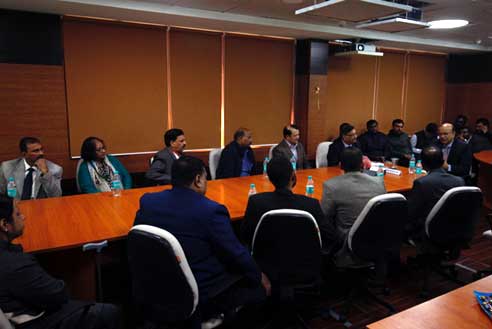 |
Last Updated: December 18, 2016

